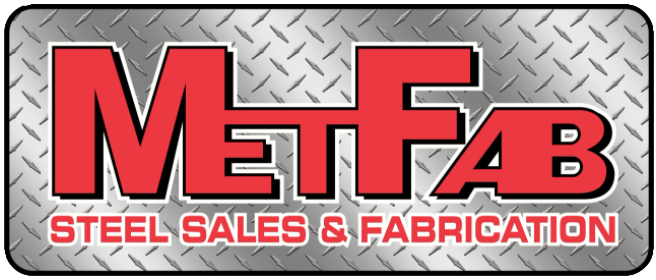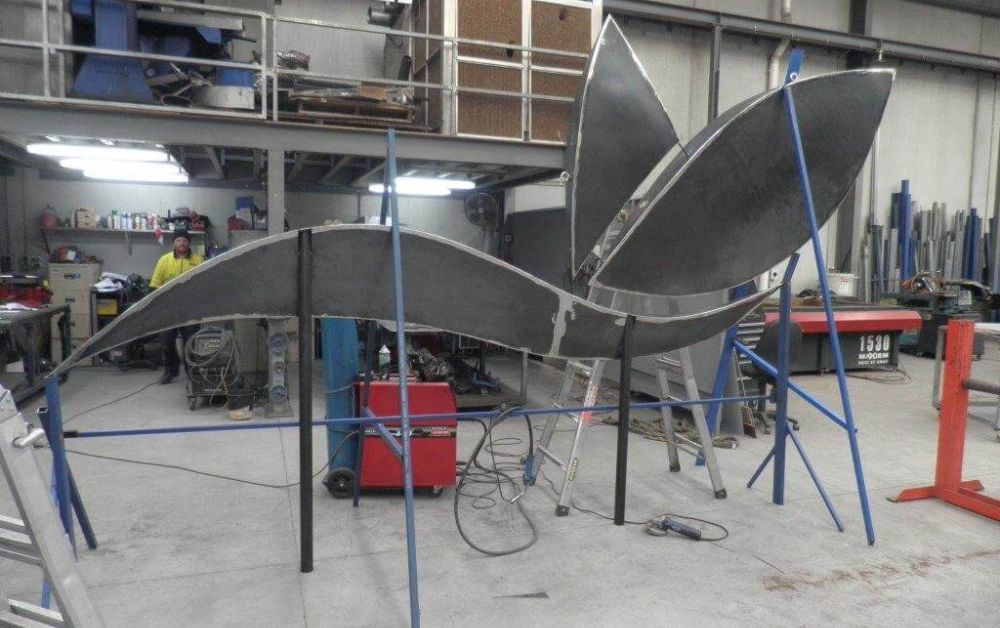How To Spot Quality Metal Fabricated Items
Metal-fabricated items are a growing trend, popping up everywhere, from home decor to industrial machinery. Metals can be transformed into functional and beautiful, whether a custom-made metal gate, sleek furniture, or intricate sculpture. I remember working on a custom metal staircase for a client's home in Melbourne—the attention to detail and the quality of materials made all the difference in the final product. Seeing the client's satisfaction reinforced the importance of high-quality metal fabrication.
As a metal fabricator in Melbourne, I've seen firsthand how the quality of these items can vary widely. Whether considering a new piece for your home or a crucial component for your business, recognizing quality craftsmanship is essential. In this blog, I'll share practical tips to help you identify top-notch metal-fabricated items. This way, you can make informed choices and get the best value for your investment. Let's dive in!
What are Considered Metal Fabricated Products?
Metal-fabricated products come in a wide range of functional and decorative items used in various industries and everyday life. Here are some common examples:
1. Custom Metal Gates and Fences
These are popular for both residential and commercial properties. They offer security and can be designed to add aesthetic value to the property.
2. Metal Furniture
Metal chairs, tables, and shelves are common in homes and offices. They are known for their durability and sleek, modern look.
3. Industrial Machinery Parts
Due to their strength and durability, many industrial machine components are fabricated from metal. Examples include gears, brackets, and frames.
4. Architectural Metalwork
This includes metal staircases, railings, and decorative panels. These items serve functional purposes and enhance buildings' architectural beauty.
5. Metal Tools and Equipment
Tools like wrenches, hammers, and pliers are often made from metal due to their need for strength and longevity. Metal equipment such as scaffolding and ladders is also fabricated to withstand heavy use.

Key Materials Used in Metal Fabrication
When it comes to metal fabrication, choosing the right material is crucial. As a metal fabricator in Melbourne, I work with various metals, each with unique properties and best uses. Here are some of the key materials we commonly use in metal fabrication:
1. Steel
Steel is one of the most popular materials in metal fabrication. It's strong, durable, and versatile. We use different types of steel, such as:
- Carbon Steel: This is a basic form of steel with carbon content. It's strong and relatively inexpensive, making it ideal for structural components like beams and frames.
- Stainless Steel: Stainless steel is known for its corrosion resistance. It is great for moisture-sensitive products, like kitchen appliances and outdoor furniture. It also has a sleek, modern look.
- Alloy Steel: By adding elements like chromium, nickel, and molybdenum, we enhance steel's properties. Alloy steel is used for heavy-duty applications like automotive parts and industrial machinery.
2. Aluminum
Aluminium is lightweight, corrosion-resistant, and easy to work with. It's widely used in various applications, including:
- Construction: Aluminum is used for window frames, roofing, and cladding because it's lightweight and weather-resistant.
- Automotive and Aerospace: Its light weight helps improve fuel efficiency, making it ideal for vehicle parts and aircraft components.
- Consumer Goods: Aluminum is used in cans, kitchen utensils, and electronic housings due to its non-toxic and recyclable nature.
3. Copper
Copper is known for its excellent electrical and thermal conductivity. It's commonly used in:
- Electrical Wiring: Copper's conductivity makes it the go-to material for electrical wires and cables.
- Plumbing: Copper pipes are durable and corrosion-resistant, making them ideal for plumbing systems.
- Decorative Items: With its attractive reddish colour, copper is often used for decorative elements and architectural details.
4. Brass
Brass is an alloy of copper and zinc known for its workability and corrosion resistance. It's used in:
- Plumbing and Electrical Applications: Brass fittings and valves are common in plumbing and electrical systems due to their durability.
- Decorative Hardware: Brass is often used for door handles, light fixtures, and musical instruments because of its appealing look.
5. Titanium
Titanium is strong, lightweight, and resistant to corrosion. It's used in:
- Aerospace: Its strength-to-weight ratio makes it perfect for aircraft and spacecraft components.
- Medical Devices: Titanium is biocompatible, making it suitable for surgical implants and prosthetics.
- Sporting Goods: Its durability and light weight are ideal for high-performance sports equipment like bicycles and golf clubs.
6. Other Specialty Metals
There are also other speciality metals like nickel, chromium, and magnesium, each with specific properties suited for unique applications. For instance:
- Nickel Alloys: Used in high-temperature and corrosive environments, such as chemical processing and power generation.
- Magnesium is extremely lightweight and is used in applications where weight reduction is critical, such as the automotive and aerospace industries.

Signs of Quality in Metal Items
So what are the signs to consider when considering a metal fabricated item created with top-notch quality?
1. Smooth and Even Surfaces
One of the first things to check is the surface of the metal item. Quality metal items should have smooth, even surfaces without rough spots, dents, or scratches. This indicates that the metal was handled and finished with care. For example, a well-made metal chair will have a smooth finish.
2. Strong and Sturdy Build
A quality metal item should feel solid and sturdy. It shouldn't wobble or bend easily when you pick it up or press it. For instance, a strong metal gate should feel robust and heavy, indicating it's made from good materials and constructed well.
3. Neat and Clean Joints
The joints where metal pieces are joined together are critical points to inspect. Look for neat, clean joints without gaps or excess material. Good welding should look uniform and smooth, showing that the pieces are securely joined. For example, a metal table with clean welds at the joints will be more stable and durable.
4. Uniform Color and Coating
Quality metal items will have a consistent colour or coating throughout the surface. This includes paint, powder coating, or any protective layer applied to the metal. Uneven colour or signs of rust and corrosion indicate poor quality. A metal fence with a uniform paint job looks better and lasts longer.
5. Precision in Details
Attention to detail is a hallmark of quality craftsmanship. Check for precise cuts, clean edges, and well-finished details. For example, a metal sculpture with intricate details and smooth edges shows that the fabricator took the time to ensure a high-quality finish.
6. Good Design and Functionality
A quality metal item should not only look good but also function well. Consider how the item is designed and whether it effectively serves its intended purpose. For instance, a metal tool should be ergonomic and easy to use, with all parts fitting together perfectly.
7. Consistent Thickness
The thickness of the metal should be consistent throughout the item. Variations in thickness can weaken the structure and lead to failure. For example, a metal shelf with consistent thickness will support weight evenly and be less likely to bend or break.
8. Proper Assembly and Fit
All parts of a metal item should fit together properly without gaps or misalignment. Check that moving parts operate smoothly and that all components are securely attached. For instance, a metal gate should swing open and close smoothly, with all parts fitting together seamlessly.
9. Quality Fasteners
If the item uses screws, bolts, or other fasteners, these should be high-quality and properly installed. Loose or low-quality fasteners can compromise the integrity of the item. For example, a metal railing with sturdy, well-installed fasteners will be safer and more durable.
10. Manufacturer's Reputation
Finally, consider the reputation of the manufacturer. Quality metal items are often made by companies known for their craftsmanship and attention to detail. Look for reviews, ask for references, and choose manufacturers with a proven track record of producing high-quality metal products.
Tips for Buying Quality Metal Fabricated Items
Knowing what to look for when buying metal fabricated items is important to ensure good quality.
Here are some practical tips to help you make the best choice.
1. Inspect Surfaces and Joints
First, examine the surfaces and joints closely. Quality metal items should have smooth surfaces without any rough spots or imperfections. Run your hand over the surface to feel for irregularities. Also, examine the joints and welds. Clean, neat, and uniform welds without gaps or excess material indicate that the fabricator took the time to do the job right. For example, a well-made metal chair will have smooth surfaces and clean welds, making it look good and durable.
2. Test Sturdiness and Functionality
Please pick up the item or press on it to check for sturdiness. A high-quality metal item should feel solid and not wobble or bend easily. If it's something with moving parts, like a gate or a tool, ensure everything operates smoothly. For instance, if you're buying a metal gate, swing it open and close it a few times to see if it moves smoothly without any squeaks or resistance. This ensures that the item is well-built and will function properly over time.
3. Look for Uniform Coating
Check that the colour or coating on the metal item is uniform. A consistent finish looks better and protects the metal from damage. Uneven paint, powder coating, or signs of rust and corrosion are red flags. For example, a metal fence with a uniform paint job will be more resistant to weather elements and last longer. A quality finish shows that the manufacturer has paid attention to detail and used good materials.
4. Research Manufacturers and Reviews
Do some homework on the manufacturer before you buy. Quality metal items are often made by reputable companies known for their craftsmanship. Look for reviews and ratings online to see what other buyers say about the item and the manufacturer. Positive feedback can give you confidence in your purchase, while negative reviews can warn you of potential issues. Choosing a well-known and respected brand can save you from headaches down the line.
5. Consider Materials and Details
Lastly, pay attention to the materials used and the item's details. High-quality metal items often use better materials that are more durable and perform better. For example, stainless steel is great for moisture-related items because it resists rust. Also, look at the details like precise cuts, clean edges, and well-finished components. Small details can make a big difference in the overall quality and longevity of the item. Investing in an item made from good materials and with attention to detail will pay off in the long run.
FREQUENTLY ASKED QUESTIONS
Conclusion
Spotting quality in metal-fabricated items can be simple. You can make informed choices by inspecting surfaces and joints, testing for sturdiness and functionality, looking for a uniform coating, researching manufacturers, and considering materials and details. Remember, investing in quality items pays off in the long run with better durability and performance. Trust your instincts and take the time to evaluate each piece carefully.
Whether you're buying for your home or business, these tips will help you find metal items that are well-made and worth every penny.


